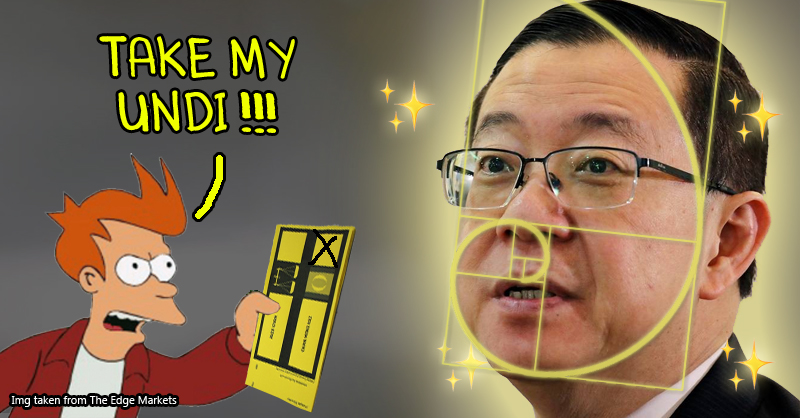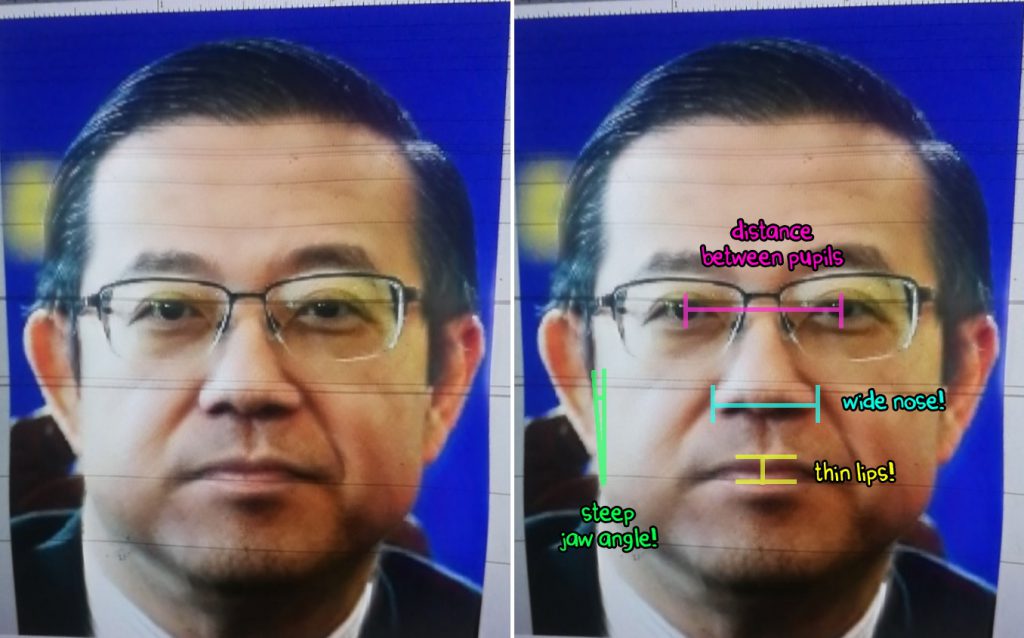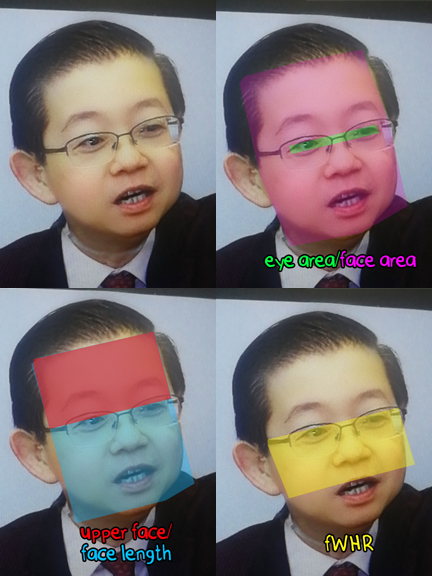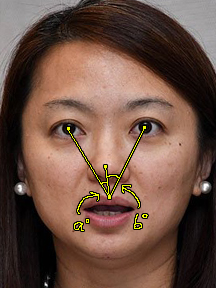Do hensem/lenglui MPs get more undi? We analyzed their faces.

- 98Shares
- Facebook87
- Twitter2
- LinkedIn1
- Email2
- WhatsApp6
Some time in the past weeks, a political party named Gerakan announced that they will be nominating good-looking candidates for the upcoming Johor by-election. According to party president Dr Dominic Lau Hoe Chai, this decision was made with possibly tight SOPs in mind.
“Gerakan candidates representing Perikatan Nasional (PN) need to be good-looking to attract voters as we expect tight SOPs for the Johor by-election. Candidates will be campaigning more through social media, posters, and pictures, so it’s important for them to have good looks.” – Dr Dominic Lau How Chai, translated from Utusan.
Now, this might seem shallow at first glance… but is it though? For one thing, a politician’s face is pretty important, which is perhaps why they take every chance they have to show it off.

Sticker also can. Img from MH Daily.
Adding to that, studies done overseas have suggested that a political candidate’s face do affect their chances to get elected. But is this the case for Malaysia as well? Let’s try to find out…
Based on GE14 results, we picked 40 MPs and measured their faces
Since we have neither the time nor patience to measure the faces of all 222 MPs, we arranged every MP based on the portion of votes they got in GE14 and picked the top and bottom 20. This way, we got two extremes: a bunch of MPs who have so much votes that they won comfortably, and another bunch who barely won their seats. You can check out the list (as well as the detailed results and image sources) in this Google Sheets document.

Since ‘attractiveness’ is pretty subjective, we decided to look at three things that might influence the votes, based on other studies:
1. Facial masculinity – because it’s been said that people tend to vote for more masculine faces, since they appear more competent. Aspects of masculine faces include thinner lips, wider noses, steeper jaw angles, and smaller eyes.

Measures for facial masculinity. Edited using Snapchat.
2. Babyfacedness – because it’s the opposite of a ‘competent face’, so people may not prefer to vote them. However, people may trust babyfaced politicians more. Aspects of baby-like faces include bigger eyes, rounder faces, and taller foreheads.

Measures for babyfacedness.
3. Facial symmetry – because people with slightly lopsided faces have been said to be better leaders. We measure this by looking at the difference in angle between the upper lip and the eyes.

Measure for facial symmetry.
So, armed with a 6-inch plastic ruler and a protractor, our writers began the long process of scrutinizing the dimensions of our beloved MPs’ faces. Here are the results!
1. The thinnest lips in the land – Ramkarpal Singh

This is measured by adding up the height of each lip and expressing it as a percentage of the interpupillary distance, i.e. the distance between the pupils. A measure of masculinity, thinner lips should get more votes, but both the thinnest and thickest lips are in the big winners group. Also, since the difference between the number of votes they got is as thin as Ramkarpal’s lips, we can say that this one’s inconclusive.
2. The widest nose of all – Chow Kon Yeow

The nose score is also a percentage of the nose span as a percentage of the interpupillary distance. Another measure of masculinity, wider noses are more masculine, and therefore should garner more votes. However, again both the widest and narrowest noses are within the big winners group, and there’s not much difference in the number of votes gained. The result remain inconclusive.
3. The steepest jaw – maybe Jugah Muyang? Or not.

This is measured by drawing a line from the point of the jaw to the point of the nearest cheekbone, then drawing a right-angled triangle using that line. The angle at the jawbone point is measured. Another measure of masculinity, steeper jaws should garner more votes, but this one might be discredited since we can’t reach through the picture to locate where Jugah’s jawbone is.
However, based on the estimate, it seems that Jugah , with the steepest jaw angle, is in the lowest voted group, while Hannah, the one with the biggest jaw angle, is in the winners group. So this one is overturned.
4. The littlest eyes – Fong Koi Lun

Both a measure for masculinity and babyfacedness, with masculine faces having small eyes and baby-like faces having big eyes. This is calculated by drawing the smallest possible rectangle to cover the eyes, then comparing the area of that to the smallest possible rectangle that covers the face. Smaller eyes should get more votes, however, both the biggest and smallest eyes are in the big winners group, with little difference between them.
So far, Hannah Yeoh had proved that facial masculinity isn’t a strong factor in attracting votes, having scored the lowest in 3 out of 4 masculine traits and still managing to be the 17th most voted MP in GE14.
5. The roundest (pentagon-est?) face – Chow Kon Yeow

This is calculated by dividing the distance between each cheekbone (face width) by the height where most facial features are located, i.e. from the top of the eyes to the top of the upper lip. Bigger scores mean a more squashed, round face, more babylike, and less likely to get votes. Despite having names such as Mujahid Yusof Rawa and Hannah Yeoh on the roster, Chow Kon Yeow again makes an appearance as the one with the highest face width-to-height ratio.
The votes he obtained more than double the votes obtained by the stretched-out Hatta Ramli, so the notion of babyfaces getting less votes is overturned.
6. The one with a fivehead – Chow Kon Yeow, again

This is actually something called the vertical placement ratio, and it gauges how low your facial features are placed on your face, obtained by dividing the length of your face from the tip of the head to the top of the eyes by the whole length of the face. Lower-placed features translate to a larger forehead compared to the rest of the face, and is seen as more babylike, and less likely to get votes.
Chow Kon Yeow again has the tallest forehead measured, with Hatta Ramli again proving that he’s no baby-looking MP. Including Hannah Yeoh’s eyes from earlier, the results we got for this section actually overturned the conception that babyfaced politicians get less votes as they’re seen as less competent. However, babyfaced individuals are seen as more trustworthy, so maybe there’s something there.
7. The most lopsided MPs

This is determined by the eye-mouth-eye (EME) angle method, where three lines are drawn from the crook in the upper lip to both pupils and the tip of the nose. While all the MPs we measured have some degree of asymmetry to them, these three got the highest scores – if you look closely, the crook in the upper lip don’t align with the tip of their noses.
While people with asymmetrical faces have been seen as having better leadership qualities, it doesn’t seem to influence voters as all three of these MPs are within the least voted group, garnering less than 40% of the total votes in their seats. With almost all our preconceptions overturned so far, we can perhaps infer that…
Elections in Malaysia go beyond simple measures of ‘attractiveness’
As we’ve mentioned earlier in the article, attractiveness is kind of hard to define, and it goes beyond facial measurements and proportions. For example, take a look at these similarly-proportioned pictures. Then turn it upside down.

Original img from Harian Metro.
Called the Thatcher Effect, it demonstrates that even when the proportions are the same, when you turn it upside down, your brain can tell the difference. And even if we don’t consider proportions, attractiveness have many other facets not obvious in still photos – posture, the way someone carries themselves, their manner of speech, facial expressions – all contribute to whether they’re likable or not.
Discounting attractiveness and likability, a lot more goes into a candidate’s success in Malaysia. Campaigning tactics, your connections, the logo you associate yourself with, and many other things all influence how well you can get people to vote for you. While the results of our little measuring experiment aren’t very convincing, we’d like to think that facial attractiveness is part of the whole equation, but maybe we’re not looking at the features that Malaysians prefer.
Anyways, with tight SOPs probably being here for a while longer, perhaps facial attractiveness will play a bigger part in elections in the near future. But whether it’ll be big enough to make Gerakan’s gambit a success will remain to be seen.
- 98Shares
- Facebook87
- Twitter2
- LinkedIn1
- Email2
- WhatsApp6
